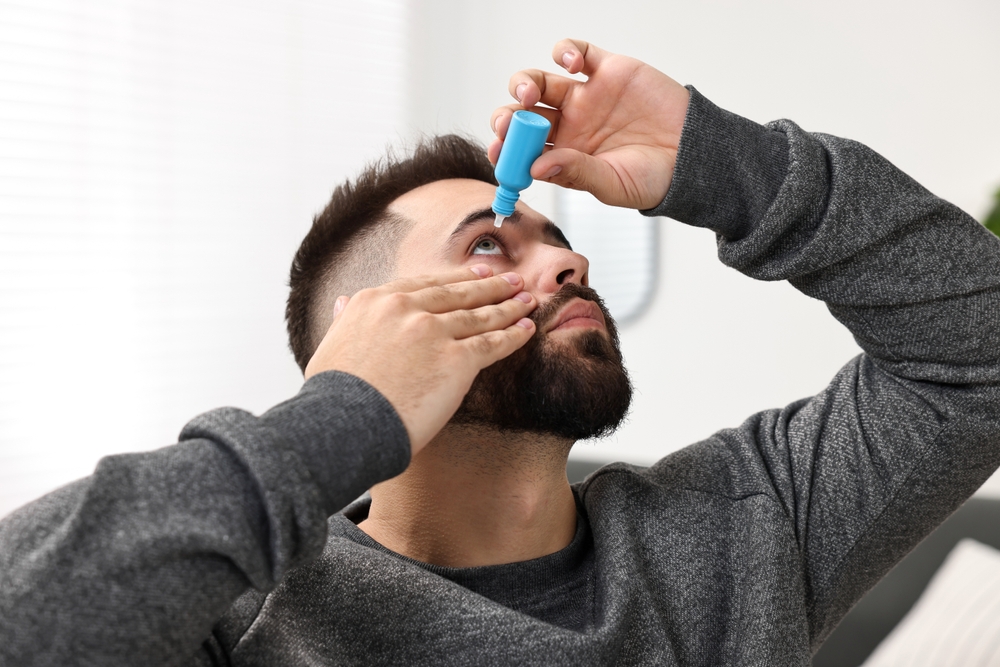
Dry eye is a common and often chronic condition that affects millions of people worldwide. It occurs when your eyes are unable to produce enough tears or when the tears evaporate too quickly, leading to discomfort, irritation, and even vision problems. Understanding the causes, symptoms, and treatment options for dry eye is crucial for managing this persistent condition.
Understanding the Causes of Dry Eye
One of the leading causes of chronic dry eye is a condition called meibomian gland dysfunction (MGD). The meibomian glands are responsible for producing the oily layer of the tear film, which helps to prevent the tears from evaporating too quickly. When the meibomian glands become blocked or dysfunctional, the tear film becomes unstable, leading to increased evaporation and chronic dry eye. Dry eye can also be caused by a variety of factors, including:
Aging: As we get older, our tear production naturally decreases, making us more susceptible to dry eye.
Environmental factors: Exposure to dry, windy, or air-conditioned environments can exacerbate dry eye symptoms.
Certain medical conditions: Conditions like Sjögren's syndrome, rheumatoid arthritis, and diabetes can contribute to the development of dry eye.
Medications: Some prescription and over-the-counter medications, such as antihistamines, can reduce tear production.
Digital eye strain: Prolonged use of digital devices, such as computers, smartphones, and tablets, can lead to decreased blink rate and increased evaporation of tears.
Common Dry Eye Symptoms
The most common symptoms of dry eye include:
Irritation, burning, or stinging in the eyes
Redness or inflammation
Blurred vision
Sensitivity to light
Feeling like there is something in your eye
Excessive tearing
If you experience any of these symptoms, it's important to consult with an optometrist to determine the underlying cause and develop an appropriate treatment plan.
Differentiating Between Acute and Chronic Dry Eye
It's important to understand the difference between acute and chronic dry eye, as the treatment approaches may vary. Acute dry eye is typically a temporary or short-term condition that is often triggered by a specific event or environmental factor, such as:
Spending extended time in a dry, windy environment
Using certain medications
Experiencing eye irritation or injury
In these cases, the dry eye symptoms may be more severe but often resolve once the triggering factor is addressed or removed.
Chronic dry eye, on the other hand, is a persistent and long-term condition that requires ongoing management and treatment. Chronic dry eye is often associated with underlying medical conditions, such as Sjögren's syndrome, or with age-related changes in the tear-producing glands. Individuals with chronic dry eye may experience a range of symptoms that can fluctuate in severity but do not fully resolve without proper treatment.
The Importance of a Proper Diagnosis for Personalized Treatment
Accurate diagnosis is crucial for the effective management of dry eye, as the underlying causes and severity can vary greatly from person to person. Your eye doctor will perform a comprehensive eye examination, which may include:
Measuring tear production and quality
Evaluating the health of the meibomian glands
Assessing the health of the ocular surface
Considering any underlying medical conditions or medications that may be contributing to the dry eye
Based on the findings, your doctor will be able to determine the type of dry eye you are experiencing and develop a personalized treatment plan to address your specific needs.
Effective Treatments for Dry Eye Management
One effective treatment for dry eye is Intense Pulsed Light (IPL) therapy. OptiLight IPL uses carefully calibrated light pulses to target the blood vessels that contribute to the inflammation associated with dry eye. By reducing this inflammation, IPL helps restore the normal function of the meibomian glands, allowing for better tear production and distribution. OptiLight IPL not only addresses the root causes of dry eye but also offers additional cosmetic benefits, such as improving the appearance of the skin around the eyes.
Low-Level Light Therapy (LLLT) has emerged as another effective treatment for managing dry eye syndrome, particularly in cases where traditional methods have been insufficient. LLLT works by emitting specific wavelengths of light that penetrate the eyelid tissue to target the meibomian glands. This treatment helps to stimulate and unclog these glands, promoting better tear production and improving the overall quality of the tear film. LLLT is non-invasive, painless, and has the added benefit of reducing inflammation and improving blood circulation in the eyelid area, further aiding in the relief of dry eye symptoms.
In addition to LLLT and IPL, our office also offers TearCare for dry eye treatment. The system utilizes flexible, heated pads that conform to the shape of the eyelids, delivering gentle, consistent heat to the meibomian glands. This heat helps to soften and liquefy the thickened oil that may be obstructing these glands, allowing for improved oil flow into the tear film. After the heat application, the eye care professional manually expresses the glands, ensuring the release of the trapped oils, which can help restore a more stable tear film, alleviate dry eye symptoms, and improve overall eye comfort.
Maintaining proper lid hygiene is also crucial for managing dry eye syndrome, as it helps keep the eyelids and lashes free of debris, bacteria, and oil buildup, which can contribute to inflammation and worsen dry eye symptoms. Additionally, incorporating high-quality Omega-3 supplements into your routine can support tear production and reduce inflammation, helping to alleviate dry eye symptoms from within.
Schedule Your Dry Eye Evaluation with Ridgeview Eye Care Today
At Ridgeview Eye Care, our experienced eye care professionals are dedicated to providing personalized treatment for chronic dry eye. If you're struggling with persistent dry eye symptoms, schedule a consultation with us today. Our advanced diagnostic and treatment options, including LLLT and OptiLight IPL, can help you find the relief you need and take control of your eye health.
To learn more about effective dry eye treatment options, visit Ridgeview Eye Care at our office in Olathe or Lenexa, Kansas. Call (913) 261-8327 to book a consultation today.
















